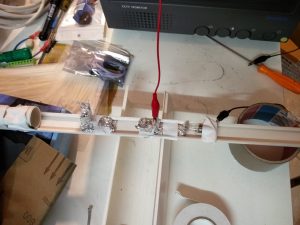I have recently built a little particle accelerator, which is not as complicated as it seems.
My purpose was to accelerate electrons and collide them with a dense target in order to produce bremsstrahlung radiation. This is usually done using a heated filament and a positively charged metal plate in a vacuum.
Many different cheap X-rays tubes can be found on the Internet, but I tried building one myself.
I used a light bulb, an old grayscale CRT monitor, and some aluminum foil.
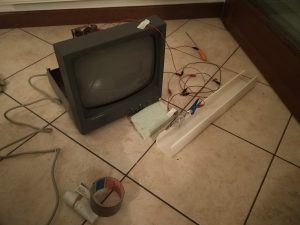
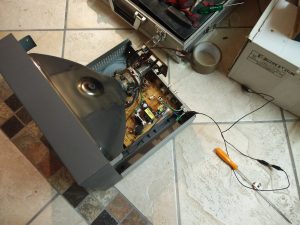
I disassembled the monitor; the high voltage power supply was connected to the CRT anode: I disconnected it and attached it to the aluminum foil (after having previously discharged it).
I connected the light bulb to ground and taped the aluminum foil to the glass.
I left the room and turned on the tv by plugging it in from behind a wall.
Unfortunately, at first it did not work; afterwards, I tried heating the filament by leaving it powered on with a 12V battery, but even this time I wasn’t able to produce X-rays.
I later discovered that probably the light bulb I initially used was filled with inert gas rather than vacuum.
Finally, after swapping the light bulb with an older one, it worked and I clearly detected X-rays even with my smaller geiger counter.
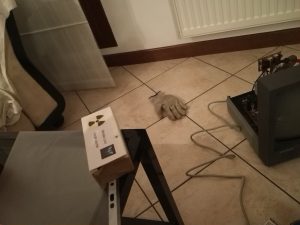
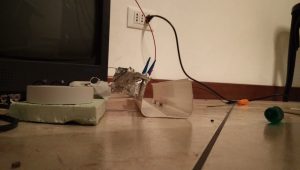
I expect the electron beam to be between 10keV and 20keV, but I have not yet measured it.
The accident
Later I tried making an x-ray of an item; I picked up the first thing I could find (a cordless phone), and placed it between the bulb and the front of the CRT (that I expect to act as a fluorescent screen since the monitor is not x-ray shielded like the color ones).
I have wrapped better the bulb in aluminum foil and tried turning the machine on again, but something unexpected happened, it went on fire. I later identified the cause of the fire as a piece of foil that had stuck in the tape, then, not noticing it, I taped the rest and the small piece of foil that was stuck under the tape went too near the lamp socket, when the high voltage supply was turned on it created a voltaic arc through the insulating tape, that ionized the air and set the insulating tape and the bulb socket on fire. Then the fire rapidly extinguished itself probably due to the presence of flame retardant both in the insulating tape and the plastic of the bulb socket.
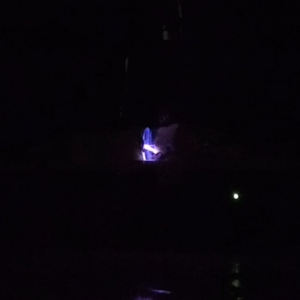
UPDATE:
Today the bulb filament broke in multiple points, rendering the light bulb completely useless even when using it as a cold cathode. I plan to replace it with a low voltage bulb, that usually has a thicker filament and should not brake that easily.
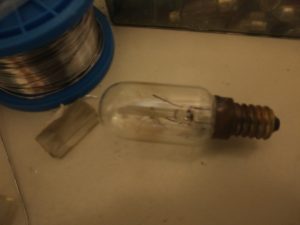
UPDATE:
Today I replaced the broken light bulb with a low voltage bulb, it did not produce any x-rays and I suspect it to be filled with inert gas.
I later replaced it with another, smaller low-voltage light bulb that sounded better and probably was had vacuum in it, it went on fire.
This was probably due to it being smaller and the aluminum foil being nearer to the socket, this created a voltaic arc that set it on fire, again, due to the presence of flame retardant in the plastic, the fire rapidly extinguished itself. The heat broke the glass, filling the inside with air and rendering the bulb useless.
UPDATE:
Today I tried with a few more light bulbs, none of them worked. I am now planning to try with a vacuum tube, as soon as I can find one.
UPDATE:
I made a video with some of the most significant attempts that I have done.
I will continue working on the project when I will have some spare time, which will probably be after my stage at the LNF.

